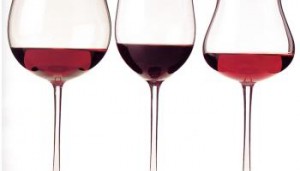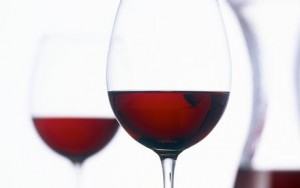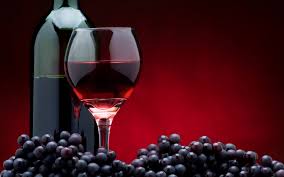All about French red grape varieties before visiting France
All you need to know about red grape varieties to better Prepare a wine trip in France
You’d love to go to France and visit the most well known regions or extend a trip a Parisian trip to a nearby wine area? But you think you don’t know well enough about the local grape varieties to fully enjoy your trip? Indeed, it is wiser to grasp an overview of the different styles that are out there. Therefore, we strongly advise you familiarize in advance with the most common grape varieties.
Don’t worry; we’ve done the hard work for you. All you need to do is head to your local wine shop and ask for a good representation of the four types if grapes below. Take them home and pop all of them in the same night, tasting through the bottles in the order they’re discussed below. These wines will take you on a journey to help you understand acidity, tannin, body, and alcohol and in the end, help you figure out how to talk about the red wine styles you’ll encounter once in France.
PINOT NOIR, the most charismatic
First step: understanding acidity and its nuances. To do so, Pinot noir is your new best friend. Pinot has a cult following among wine geeks thanks to a mix of surprising flavors and aromas that just work together so well. The wine owns a very light red color in the glass, and has the lightest body of all wines you’ll taste. When smelling it, you’ll often have aromas of cherries, raspberries and cranberries coming up. Pinot has very low tannins, making its acidity very easy to notice. The Pinot Noirs produced in the Old World are considered as the most representative thanks to their lean structure and bright acidity. Whereas New World Pinots (which are also great !), can come up with a juicier flavor, wiping out the acidity you want to experience. For example, looking at French ones, pinot noir is rustic, earthy and acidic. Those from Sonoma are lusher with rich black cherry flavors and with a higher composition in alcohol. Here is what you can expect from different regions that produce pinot noir:
As Pinot Noir is very coveted, be prepared to spend a great amount of money on this bottle. You’ll find really crappy Pinot out there that simply uses the varietal’s name to sell subpar budget wine. Therefore when it comes to choose Pinot, stick to a price over $20 and avoid hazardous bets.
Pinot Noir is THE grape you find in the whole area of Burgundy.
It does not tend to live as long as Cabernet Sauvignon and great Merlot.
SYRAH, the ideal food pairing wine
Time to understand body! There is no better choice than Syrah to start this journey. We are talking here of that big, inky red wine composed dark fruit flavors, such as plums and blueberries, with gentle touches of chocolate and tobacco. The aftertaste will surprise you with its charming spicy peppery note. Because of its front-loaded style, Syrah is often blended with grapes that add more mid-palate, such as Cabernet Sauvignon, so the wine taste is even more complete. Traditionally in France, Syrah is blended with light-bodied Grenache and even richer Mourvedre to shape the classic Côtes du Rhône blend. If you’re looking for a velvety, smooth wine, this is your pick. It’s the perfect choice to go along with lamb, and the best supporter of your next cheese party.
If you want to know more about Syrah, you definitely have to visit the Rhone Valley area, south of France. The greatest (and most expensive!) Syrah wines are from the appellation named Hermitage. The best wines are sourced from a hill close to the village of Tain-l’Hermitage and are known for their floral and smoky aromas of blackberry and grilled meat.
CABERNET SAUVIGNON, the king of the wine
Now it’s time for the big question: Are you into tannins or not? Tannins are wines that will make your mouth feel a bit dry when swallowing and reputed as fantastic antioxidants. Cabernet Sauvignon is a great wine for experiencing these tannins, not to mention that it’s the most popular red wine in the world.
The wine is full bodied with aromas of dark cherries, spice and hints of vanilla, as the wine is often aged in oak. When you sip it, you’ll notice some green pepper notes that also give the wine this nice herbaceous quality.
Cabernet sauvignon is often blended with cabernet franc, merlot and Petit Verdot. It’s the ideal steak wine, and is much better when drunk along with food. Even though it is a typical Bordeaux wine-variety, Cabernet Sauvignon also grows in the Loire Valley, Languedoc Roussillon, Provence and in South West of France. In Bordeaux region, mainly in Graves and Médoc, Cabernet represents over half of the planted grape-varieties.
The soft MERLOT
In France, Merlot is the most widely planted red wine variety. The softness of Merlot shaped it as the perfect initiation wine for new red-wine drinkers. Its typical scents include black cherry, plums and herbal flavors. The texture is round but a middle palate gap is commonly found. The Merlot type of wine is less tannic (less rough) than Cabernet Sauvignon. It is a key player in the Bordeaux blend. Cabernet Sauvignon and Merlot complemented each other so well, that the pair became the main ingredients for the world-renowned Bordeaux blend.
Even in the Médoc, famed for its Cabernet Sauvignon, Merlot can form up to half of the wines produced. Elsewhere, in the less well known appellations of Bordeaux and basic red Bordeaux, it is often the dominant grape thanks to its ripening ability making it more practical and reliable than Cabernet Sauvignon or Cabernet Franc. It is the insurance policy for a Bordeaux grower against a poor harvest.
But there’s more to Merlot’s success. This fame extends in Bordeaux as well as in other areas of southwest France, and, increasingly, in Languedoc. In fact, these wines are ready to drink at an early stage. They don’t require a long aging period, as with fine Cabernet Sauvignon. They are meaty, rich and appetizing right out of the gate.
Most Merlots, like most French wines, are made to go hand in hand with food. As immediately friendly as they are, they have a tannic structure that needs and enhances food.
Now, it is up to your own taste and the food you cook. But, enjoy it above all ! And Bon Voyage !







